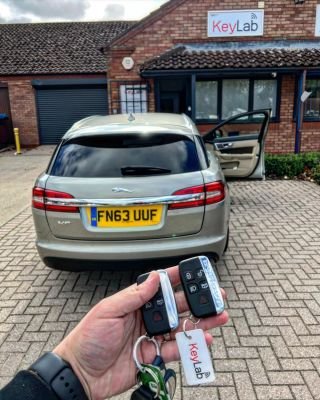See What Mobile Car Diagnostics Near Me Tricks The Celebs Are Making U…
페이지 정보
작성자 Windy 작성일24-05-27 05:26 댓글0건관련링크
본문
 Types of Vehicle Diagnostics
Types of Vehicle DiagnosticsVehicle diagnostics can be used to determine the cause of a variety of problems with the vehicle. There are different types of diagnostic tools and the service technician will choose the right one for the situation and the present technical condition. OBD-II, CANBUS are two examples of these tools. Using the appropriate tool for the job can aid the technician in identifying the issue and help make repairs required.
OBD-II
OBD-II diagnostics for vehicles are made using sensors to detect problems with vehicles. These sensors transmit abnormal information to the vehicle's engine control unit (ECU) which stores it as a Diagnostic Trouble Code. The code is a sequence of numbers and letters that determine the nature and the root of the issue. OBD-II codes are applicable to all areas of a vehicle, such as the chassis, body powertrain, network, and.
OBD-II vehicle diagnostics can be performed with the help of a variety of tools. These tools range from simple consumer-level tools to advanced OEM dealership tools and vehicle electronic telematics systems. The most basic tools comprise hand-held scanners and fault code readers. There are also rugged and sophisticated tools that are available.
A scan tool is a gadget that can read diagnostic trouble codes that are stored in a vehicle’s computer system. It can also read the vehicle's VIN. OBD-II scanners have a feature that can read codes from any protocol. A mechanic can read and interpret the data and provide you with all information regarding your vehicle's problem.
OBD-II car diagnostics are the best way to save money while improving your car's performance. They can also provide details about the condition and health of important engine components as well as emission controls. This information is useful for diagnosing problems quickly and easily.
CANBUS
If you own a CANBUS compliant vehicle, you can conduct an entire system scan using the help of a scanner. This will show you which modules need to be on and which ones are off. This could be a sign of a problem with the wiring or communication.
CAN bus problems can present a variety of symptoms, including complete or partial loss of vehicle functionality. These issues can cause an audible or visual warning for the driver. Other symptoms may be caused by software issues. A CAN bus error diagnostics could also cause a malfunctioning charging system, low battery voltage or incorrect connections.
A low resistance reading on a CAN port is indicative of a malfunctioning device, or a defective wiring harness. Certain CAN devices may have an internal termination resistor which switches between on and off when the unit is powered up. The manufacturer's service instructions should contain the internal termination resistors of the specific CAN device.
The CAN bus protocol is a protocol based on messages created to connect automobile components. In addition to the ability to communicate between vehicles, it also allows for the reduction of copper by using multiplex electrical wiring. Each device transmits data in a frame, which is subsequently received by all devices connected to the network.
Check engine light
A Check engine light on your car could indicate an issue that is serious. You must immediately take your vehicle to a mechanic in the event that you see an orange or red light. The faster you get it fixed, Diagnostics the cheaper it will be. This light could also be accompanied by other symptoms, for instance, an abnormal engine noise.
Regardless of the cause regardless of the reason, the Check Engine Light is meant to let you know of a problem in your vehicle. This engine-shaped orange icon is usually located in the instrument cluster, and it is illuminated when the car's onboard computer detects any issue. The indicator can be activated by a myriad of issues but at times it's as simple as a loose gas cap or a defective spark plug.
Another possible cause of the Check Engine Light is a issue with the exhaust system. An exhaust gas recirculation valve (EGR) can cause this light to come on. While these valves do not require regular maintenance, they could get blocked by carbon and require to be replaced. A malfunctioning EGR valve will also result in a greater amount of emissions. After you've resolved this issue, your car's sensors will turn off the light automatically. However, if your car's CEL has been on for more than three days, you might need to look into the issue again or try manually resetting the light.
A diagnostic scan will reveal what codes are causing your Check Engine light to blink. Sometimes it's a simple scan with an ordinary scan tool will find the cause. For more complex problems it is recommended to use professional scanners.
Trouble codes
Diagnostic trouble codes, also referred to as DTCs, are digits that describe the issue in your vehicle. The codes can range between one and five characters and can signify anything from a warning light to a malfunctioning engine. These codes can be used to troubleshoot and pinpointing the source of issues.
Although DTCs are used to identify vehicle issues, not all of them are serious. Sometimes, trouble codes signal that the sensor circuit is out-of-range or that there is a problem with the emissions control system. Once you have identified the issue, you can begin to fix the issue. It is essential to know where the trouble codes are located in your vehicle. DTCs are usually stored in the Engine Control Module or Powertrain Control Module.
Trouble codes for diagnostics are important for determining what kind of problem is causing the problem. These codes can assist a mechanic in diagnosing the issue and determine the most effective course of action. The check engine light could signal a problem in the fuel level sensor circuit. It could also be a sign of an issue with the emissions idle control system. Sometimes, the light may indicate something more serious such as a loose gas caps.
Some of these codes may be critical and require immediate repairs. If you have more than one DTC in your vehicle, it is important to determine which one is more urgent and urgent to repair.
Checking fuel supply
Volume and pressure in the fuel tank can be a crucial component of vehicle diagnostics. A malfunctioning fuel pump can set diagnostic trouble codes in the computer of your vehicle. You can identify these codes by using scanners or a code reader tool. Many auto parts stores offer code reading for free. Alternately, you can purchase cheap code reading devices for your smartphone. Once you have an idea of what to look out for you can test the fuel pressure.
It's a step-by- stage procedure to test your fuel supply. It's fairly easy to carry out. The first step to check the fuel system is to listen for an audible hum. It should last for about 2 seconds , and then stop. If you hear a humming sound, it means that your fuel pump's electrical circuit is functioning properly. If not, you will need to run additional diagnostic tests.
You can also test the fuel pressure and the MAF sensor for fuel leaks. A dirty MAF sensor could be the culprit of the P0171/P0174 codes. If you are unsure which part you need to replace, you can use an efficiency chart for volumetric measurements or calculator to determine which one.
To ensure your vehicle's health It is crucial to monitor the fuel pressure. If your car isn't starting properly, even though the pressure is high, it will experience difficulty getting started. A voltmeter reading that shows low pressure may be an indication of poor fuel flow. Utilizing a scope as well as an amp clamp, you can test the voltage and amperage of the injector pulses.
Checking the air filter
Air filters that are dirty can lead to a variety of problems in your car, including rapid acceleration, fuel that is not burned and even mini explosions. It is possible to identify problems early by checking your air filter. Start by removing all fasteners that connect the air intake box together. These fasteners may be clips, screws or even Hex nuts. Once the fasteners are removed you can remove the air filter.
Check that the filter is properly situated and cleaned. This will enable it to work properly. The engine may not function properly if it has a filter that is dirty. It might also not give precise readings. The air filter is close to the engine or near to the front of your vehicle.
The check engine light can be caused by a clogged filter. This indicator could also signal an issue that is more serious. A blocked air filter can hinder the flow of air into the engine, which can cause too much fuel burning. Excessive carbon deposits can also cause the check engine light to flash. A knowledgeable mechanic will be able identify the reason for the check engine light.
The air filter is a vital element in the engine of a mobile car diagnostic near me. It keeps impurities and dust out of the air in the engine which results in more efficient combustion. If you don't have enough airflow your engine could experience problems starting, running and accelerating.
댓글목록
등록된 댓글이 없습니다.








